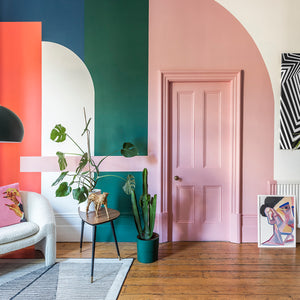The spaces we inhabit profoundly influence our emotions, thoughts, and behaviours.
The arrangement of furniture and the choice of each piece can transform a room from a mere functional area into a sanctuary that reflects and affects our psychological state.
Understanding the psychology of furniture and space is not just about aesthetics; it’s about creating environments that enhance our well-being and life quality.
The Role of Space in Psychological Well-being
Space, in the context of interior design, refers to the physical dimensions of a room as well as how those dimensions are perceived.
Spacious rooms often promote feelings of freedom and creativity, while cramped spaces can induce stress or anxiety.
The psychological impact of space is largely influenced by how it is used. For instance, an overcrowded room might feel chaotic and overwhelming, reducing the ability to focus or relax.
The concept of "personal space" also plays a crucial role in designing interiors.
Personal space—the physical area surrounding each person that they consider psychologically theirs—varies in size from one individual to another.
In environments like the home or office, respecting personal space means ensuring that furniture does not crowd someone, allowing for free movement and a sense of ownership over the environment.
Furniture and Emotional Comfort
Furniture is more than just functional; it's often a reflection of our personality and emotional needs.
Comfortable, well-chosen furniture can provide a sense of security and relaxation. For example, a cosy armchair might serve as a comforting retreat from the stresses of daily life.
Conversely, hard, uncomfortable furniture can make a space feel unwelcoming and impersonal, which might be suitable for a professional environment but less so for a home.
The textures and colours of furniture also play a significant role in our emotional responses.
Soft fabrics and warm colours can enhance feelings of warmth and comfort, while stark, glossy materials may evoke a more industrial, rigid feel.
Choosing the right combination can create a balanced environment that supports both relaxation and productivity.

Cognitive Responses to Spatial Arrangement
The arrangement of furniture can significantly affect our cognitive processes, such as attention, memory, and spatial awareness.
A well-organised room with strategically placed furniture can facilitate a better flow of information and easier navigation through the space, which is particularly important in workplaces and educational environments.
Moreover, the layout can influence social interactions. For instance, a circular seating arrangement promotes equality and encourages conversation, making it ideal for family rooms and meeting spaces.
In contrast, a linear arrangement might be used in a classroom or lecture hall to focus attention forward towards a speaker or teacher.
Psychological Impacts of Style and Decor
The style of furniture and decor also contributes to the psychological atmosphere of a space.
Minimalist designs with clean lines and uncluttered surfaces can promote a sense of calm and order, beneficial in particularly stressful times or occupations.
On the other hand, bohemian styles, with their eclectic and colourful elements, might stimulate creativity and a sense of adventure.
Historical styles, like Victorian or Art Deco, can evoke a sense of nostalgia and continuity, which might provide comfort to individuals who value tradition and history.
Each style speaks to different aspects of our psychological makeup and can be used to reinforce the identity and purpose of a space.
Environmental Psychology in Practice
Applying the principles of environmental psychology in furniture and space planning involves more than understanding theory; it requires attentiveness to the needs and preferences of the people who use the space.
This might mean choosing adjustable furniture that can accommodate different activities in a multi-functional room or selecting calming colours and materials in a bedroom to promote relaxation and sleep.
In professional settings, understanding the psychology of space can enhance productivity and employee satisfaction.
For instance, incorporating nature elements through colour, texture, or actual plant life can reduce stress and improve mood and cognitive function.

Conclusion
The psychology of furniture and space is a crucial aspect of interior design that extends beyond aesthetics.
By thoughtfully considering the emotional, cognitive, and social implications of how spaces are arranged and furnished, we can create environments that nurture well-being, enhance productivity, and ultimately, improve our overall quality of life.
Whether at home or in the workplace, the thoughtful integration of psychology into design can lead to more harmonious and effective environments.
Over to You…
Do you agree with The Psychology of Furniture & Space? Or is there something missing, or you would like to add? We would love to hear from you in the comments – any feedback is greatly appreciated.
Ready to Shop the Exclusive Range of Matrix Furniture?
Shop all our furniture range here and if you have any questions don't hesitate to ask us!





